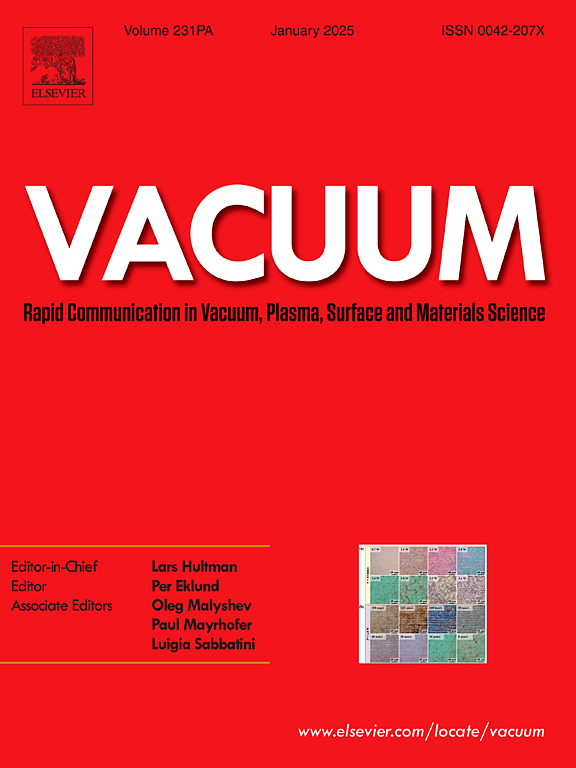The peculiar neutralization behavior in grazing scattering of Na+ ions at high-work-function metal surfaces
IF 3.8
2区 材料科学
Q2 MATERIALS SCIENCE, MULTIDISCIPLINARY
引用次数: 0
Abstract
The efficient neutralization of alkali-metal ions on high-work-function metal surfaces at low incident energies has not been understood well at present. To study this mechanism, we measured the neutral fraction of Na+ ions scattering on the high-work-function Pd(111) and Au(111) surfaces at the 7o scattering angle in the energy range of 0.2–5 keV. The non-monotonic exit-angle dependent neutral fraction for 0.3 keV Na+ ions has been obtained. The neutral fractions sharply decrease to about zero with the increase of incident energy, which is different from our previous work at large scattering angle. It indicates that the scattering angle has a great influence to the neutralization. The calculations show that the neutral atoms which efficiently formed at short ion-surface distances spend more time at large distances when departing from the surface at the grazing scattering angle and lose the electron to finally become positive ions, which qualitatively explains the less neutral fraction observed experimentally.
求助全文
约1分钟内获得全文
求助全文
来源期刊

Vacuum
工程技术-材料科学:综合
CiteScore
6.80
自引率
17.50%
发文量
0
审稿时长
34 days
期刊介绍:
Vacuum is an international rapid publications journal with a focus on short communication. All papers are peer-reviewed, with the review process for short communication geared towards very fast turnaround times. The journal also published full research papers, thematic issues and selected papers from leading conferences.
A report in Vacuum should represent a major advance in an area that involves a controlled environment at pressures of one atmosphere or below.
The scope of the journal includes:
1. Vacuum; original developments in vacuum pumping and instrumentation, vacuum measurement, vacuum gas dynamics, gas-surface interactions, surface treatment for UHV applications and low outgassing, vacuum melting, sintering, and vacuum metrology. Technology and solutions for large-scale facilities (e.g., particle accelerators and fusion devices). New instrumentation ( e.g., detectors and electron microscopes).
2. Plasma science; advances in PVD, CVD, plasma-assisted CVD, ion sources, deposition processes and analysis.
3. Surface science; surface engineering, surface chemistry, surface analysis, crystal growth, ion-surface interactions and etching, nanometer-scale processing, surface modification.
4. Materials science; novel functional or structural materials. Metals, ceramics, and polymers. Experiments, simulations, and modelling for understanding structure-property relationships. Thin films and coatings. Nanostructures and ion implantation.
 求助内容:
求助内容: 应助结果提醒方式:
应助结果提醒方式:


